new posts in all blogs
Viewing: Blog Posts Tagged with: bilingual childrens books, Most Recent at Top [Help]
Results 1 - 25 of 38
How to use this Page
You are viewing the most recent posts tagged with the words: bilingual childrens books in the JacketFlap blog reader. What is a tag? Think of a tag as a keyword or category label. Tags can both help you find posts on JacketFlap.com as well as provide an easy way for you to "remember" and classify posts for later recall. Try adding a tag yourself by clicking "Add a tag" below a post's header. Scroll down through the list of Recent Posts in the left column and click on a post title that sounds interesting. You can view all posts from a specific blog by clicking the Blog name in the right column, or you can click a 'More Posts from this Blog' link in any individual post.

By:
Aline Pereira,
on 12/23/2012
Blog:
PaperTigers
(
Login to Add to MyJacketFlap)
JacketFlap tags:
Japan,
Picture Books,
Bilingual books,
bilingual children's books,
Japanese American,
Felicia Hoshino,
Week-end Book Reviews,
Week-end book review,
Akiko Hisa,
bilingual Japanese/English children's books,
Sora and the Cloud,
Add a tag
 Felicia Hoshino, Japanese translation by Akiko Hisa,
Felicia Hoshino, Japanese translation by Akiko Hisa,
Sora and the Cloud
Immedium, 2012.
Bilingual: English/Japanese
Ages: 3-8
Sora and the Cloud is award-winning illustrator Felicia Hoshino’s debut as an author. Featuring Sora, a little boy whose name means “sky,” this very delicate, whisper-like story in English and Japanese is about Sora discovering the world with the help of a fluffy cloud friend. And how appropriate that cloud and sky should come together!
While Sora and Cloud float around town dreaming up adventures, little Sora gets to see many familiar places (some readers will recognize the Golden Gate Bridge and the San Francisco Chinatown) and to learn more about his Japanese heritage. “Like a mobile in the breeze, Sora’s sky adventure spins all around him,” until he drifts gently into sleep and back down to earth, where more adventures await. The last page shows Sora and his family relaxing together under a big tree – the image of his little sister looking up to the sky and saying hello to a cloud fittingly pointing to the universality of children’s sense of wonder and boundless imagination.
Fans of Hoshino’s illustration work in A Place Where Sunflowers Grow and Little Sap and Monsieur Rodin will find the watercolors/mixed media in this bilingual treat a treasure trove to pore over and marvel at. The double spread of cute ants busily moving around town, matching Sora’s impression of people as tiny ants when seen from up above, is priceless. It adds a touch of sweet humor to a story that is all warmth, delicacy and gentle embrace.
Sora and the Cloud soars in more ways than one, and is a perfect story to share with very young ones who are starting to look at the world with wonder and amazement.
The short Japanese phrases and cultural references sprinkled throughout the book are translated and explained in the end matter, where we also learn that a portion of the book’s proceeds go to the Japan Earthquake Relief.
Aline Pereira
December 2012

By:
Aline Pereira,
on 7/18/2012
Blog:
PaperTigers
(
Login to Add to MyJacketFlap)
JacketFlap tags:
Bilingual books,
René Colato Laínez,
El Salvador,
Rene has two last names,
bilingual children's books,
multicultural children's books,
The Tooth Fairy Meets El Raton Perez,
My shoes and I,
From North to South,
Global Voices,
Cultures and Countries,
children's books about refugees,
immigrants experience in literature,
I Am René the Boy,
Playing Loteria,
Waiting for Papa,
Add a tag
My Life in the United States ~ by René Colato Laínez
Part 2 of 3 (Read Part 1 here)
For Christmas of 1984, my mother sent me a new pair of shoes from the United States. I still remember my father’s words, “These are good gringos shoes. These are very good shoes for the trip to the United States.”
 On February 17 1985, my father and I left El Salvador. Two days later, we arrived in Mexico City. Then, we were stuck in Mexico City for almost two months. We could not continue our journey because Mexican immigration took all the money from my father. It wasn’t until April that my mother sent us more money for our trip. During my journey, my father and I crossed three countries and climbed the mountains from Tijuana to the United States. But we made it to Los Angeles. My shoes were not new anymore. They had holes everywhere. One shoe was missing the sole.
On February 17 1985, my father and I left El Salvador. Two days later, we arrived in Mexico City. Then, we were stuck in Mexico City for almost two months. We could not continue our journey because Mexican immigration took all the money from my father. It wasn’t until April that my mother sent us more money for our trip. During my journey, my father and I crossed three countries and climbed the mountains from Tijuana to the United States. But we made it to Los Angeles. My shoes were not new anymore. They had holes everywhere. One shoe was missing the sole.
There are certain moments that mark your like forever. My journey and my new life in the United States as a new immigrant created a big impact in me and in my writing. In my book, My Shoes and I, I tell the story of my journey and in my other books I write about the new immigrant child in the United States. Most of my books are based in my life and some are autobiographical just like René Has Two Last Names/René tiene dos apellidos and I Am René, the Boy/ Soy René, el niño.
I experienced the silent period and many culture shocks. In El Salvador René is a name boy. I could not believe it that in  the United States my beautiful name was a girl’s name, Renee. Children not only laughed because I had a girl’s name but also because I had two last names, “Your name is longer than an anaconda” “You have a long dinosaur’s name.”
the United States my beautiful name was a girl’s name, Renee. Children not only laughed because I had a girl’s name but also because I had two last names, “Your name is longer than an anaconda” “You have a long dinosaur’s name.”
I was able to adapt to the new country. I studied really hard and graduated with honors from high school. Then, I went to college and became a teacher. But I did not have legal papers yet. My mother became a resident thanks to the amnesty program. She applied for my papers but it was 1993 and I had not received my green card. I started to work as a teacher because I got a work permit. For two years, I received letters from LAUSD, “We need to have evidence of your legal status. Your work permit will expire soon.” But finally in 1995, I received the famous immigration letter. Yes! I had an appointment to get my green card. It was not green after all. It was pink!
 The ideas to write many of my books are born in the classroom. One day, a first grader told me, “I want to write a letter to my mamá. She is in Guatemala and I miss her so much.” That night I wrote a story named
The ideas to write many of my books are born in the classroom. One day, a first grader told me, “I want to write a letter to my mamá. She is in Guatemala and I miss her so much.” That night I wrote a story named

By:
Aline Pereira,
on 6/15/2012
Blog:
PaperTigers
(
Login to Add to MyJacketFlap)
JacketFlap tags:
Poetry,
Poetry Friday,
Bilingual books,
Poetry Books,
bilingual poems,
Jorge Argueta,
El Salvador,
bilingual children's books,
Lucía Angela Pérez,
Talking with Mother Earth,
Add a tag
 Mother Earth is not only a source of life in Talking with Mother Earth/Hablando con Madre Tierra, a profound collection of poems by renowned Salvadoran poet Jorge Argueta (Groundwood Books/Libros Tigrillo, 2006), but she also provides the young native boy Tetl, in whose voice the poems are written, with joy, a connection with his land and heritage, and, most importantly, a comforting stability in the face of racist jeering from his peers.
Mother Earth is not only a source of life in Talking with Mother Earth/Hablando con Madre Tierra, a profound collection of poems by renowned Salvadoran poet Jorge Argueta (Groundwood Books/Libros Tigrillo, 2006), but she also provides the young native boy Tetl, in whose voice the poems are written, with joy, a connection with his land and heritage, and, most importantly, a comforting stability in the face of racist jeering from his peers.
Argueta’s poems are written in succinct free verse, presented in both Spanish and English with smatterings of Nahuatl, the language of the Nahua people passed down from the Aztecs and that Argueta grew up with. From the first poem in which Tetl presents Mother Earth, or “Ne Nunan Tal” in Nahuatl, readers are welcomed into Tetl’s life. His joy in the creations of Mother Nature is contagious, from poems such as “Walking and Whistling”, “The Wind” and “Water”; and I love the wordplay in both languages in “Suenos Días/Gourd Morning.”
These poems alone would represent a lively collection that provides insight into Nahuatl culture – and this impression is enhanced by Lucía Angela Pérez’ vibrant illustrations that leap out from the pages. What makes this book outstanding, however, is the way it draws young readers in to think about how they themselves might have behaved, whether deliberately or thoughtlessly, towards their peers from a different cultural background. The first indication that Tetl has to deal with such abuse comes in the fiercely upright poem “Yo/I”:
[…] Sometimes I feel like yelling
From my toes to my head.
Yes, I am a Pipil Nahua Indian.
[…]
I wear feathers of beautiful birds to protect me
from the bad words and the looks
that come my way from some people
because I am Indian.
Immediately after “Yo/I”, the poem “Tetl” rings with the boy’s name, Tetl: “It is the name my grandmother gave me”. The name Tetl runs in counterpoint to “But everybody knows me as Jorge” – a clue to the autobiographical nature of the poems.
A little further on, the poem “Indio/Indian” addresses the verbal abuse head on: and the illustration shows Tetl rising above it, proud of his identity, even if some people don’t understand or respect it. Indeed, what makes this collection work so well, and makes it an excellent resource for young children discussing issues of racism and bullying, is that it presents a complete view of Tetl’s life so that the cruel behaviour of his peers towards him fails to define him.
To find out more, read our PaperTigers review of this beautiful book. When I first opened it, I was expecting to be transported to another culture. I got that and so much more.
Today’s Poetry Friday is hosted by Mary Lee at A Year of Reading. Head on over!

By:
Aline Pereira,
on 5/12/2012
Blog:
PaperTigers
(
Login to Add to MyJacketFlap)
JacketFlap tags:
Bilingual books,
cultural values,
bilingual children's books,
Sara Hudson,
Gladys Elizabeth Barbieri,
Lina Safar,
Los zapatos de goma una lección de gratitud,
Rubber Shoes A Lesson in Gratitude,
Picture Books,
Add a tag
 Gladys Elizabeth Barbieri, illustrated by Lina Safar
Gladys Elizabeth Barbieri, illustrated by Lina Safar
Rubber Shoes…A Lesson in Gratitude / Los zapatos de goma…una lección de gratitud
Big Tent Books, 2011.
Ages 5-8
Every child knows that feeling of disappointment. Those wild hopes and dreams stirred by the sight of some toy or object spotted on a store shelf or in the hands of a classmate – the toy or object so desperately wanted – but which remains behind on store shelves as parents choose the option that is practical, functional, or affordable. Rubber Shoes tells this age-old tale that crosses cultural lines through the bilingual story of the spirited Gladys Elizabeth, who comes to learn that sometimes even the things we do not value have value beyond that we originally see.
When Gladys’ mother tells her they are going to buy her new shoes, Gladys dreams of what may come. “Maybe I’ll get shiny black shoes like Marilyn Jane … or ..sparkly white sandals like Nicky’s … or ruby red slippers like Dorothy’s…” But her mother crushes her hopes when she buys Gladys the “ugliest shoes in the world,” brown rubber ones that will not get lost or destroyed, no matter what Gladys tries.
But like Jo, Beth, Meg and Amy in Little Women, an encounter with another child less fortunate then her helps Gladys eventually come to see the brown rubber shoes in a new light, one that makes her realize that perhaps there is more value in the shoes than originally realized. Written in English and Spanish by first-grade teacher Gladys Elizabeth Barbieri, Rubber Shoes tells a somewhat well-worn tale of gratitude, although one worth repeating. Wordiness and some bumps in plot timing point to the author’s first-time author status, but she nonetheless delivers an important, if cliched, message about gratitude for all we have, rather than discontent about that which we don’t.
Sara Hudson
May 2012

By:
Aline Pereira,
on 5/5/2012
Blog:
PaperTigers
(
Login to Add to MyJacketFlap)
JacketFlap tags:
Cultures and Countries,
Mexican American,
and Folktales from Latin America,
Week-end book review,
Juan the Bear and the Water of Life / La Acequia de Juan del Oso,
The Three Juanes,
University of New Mexico Press,
Mexico,
Bilingual books,
Enrique R. Lamadrid,
Amy Córdova,
Juan Estevan Arellano,
bilingual children's books,
Add a tag
 Enrique R. Lamadrid and Juan Estevan Arellano, illustrated by Amy Córdova,
Enrique R. Lamadrid and Juan Estevan Arellano, illustrated by Amy Córdova,
Juan the Bear and the Water of Life / La Acequia de Juan del Oso
University of New Mexico Press, 2008.
Ages: 7+
The 19th century waterways that irrigate the Upper Mora Valley in New Mexico’s Sangre de Cristo Mountains are a marvel of engineering to this day. In places, the water seems to defy gravity, and no one is quite sure how the people who built them—lacking tools as basic as a metal-bladed shovel—accomplished it. Though the history of their construction is lost, stories about the dedicated pioneers who built them have evolved, through oral tradition, into regional legends presented here in picture-book form.
La Acequia de Juan del Oso comes from the story of “The Three Juanes”: the remarkably strong Juan del Oso, son of a local woman and a bear; Juan Mudacerros, who moves mountains; and Juan Mudarríos, who can change the course of rivers. Folklorists Enrique R. Lamadrid and Juan Estevan Arellano recognize similar characters in Spanish tradition, from which the acequia technology of the American Southwest is also derived. The super-human young men, all of them exiled from their communities as a result of unintentionally misusing their special strengths and powers, work together as only they can to bring the water up and over the mountain. Amy Córdova’s rich and colorful illustrations bring the landscape and characters to life in this story that is not only about the reward of hard work but also the pain of exclusion and the value of community.
The authors skillfully incorporate what is known about the building of the canals (such as rudimentary tools, including a half-empty brandy bottle used as a level) with the legend of the boy whose mother married a bear but is forced to return home. When an innocent swipe seriously injures another child, the half-bear Juan flees to the woods where he finds his welcoming father and the other legendary Juanes. Together they accomplish the work that enables the expanding village population to inhabit a valley on the other side of the mountain. This book brings both the folktale and the limited known history of the acequia together in a way that celebrates not only the past and the legends but also the people who live in the Mora Valley today who continue to make a beautiful life in this stark, arid, and high-altitude environment.
Abigail Sawyer
May 2012

By:
Aline Pereira,
on 4/8/2012
Blog:
PaperTigers
(
Login to Add to MyJacketFlap)
JacketFlap tags:
Japanese children's books,
bilingual children's books,
Cultures and Countries,
Week-end Book Reviews,
Tuttle Publishing,
Japanese children's books illustrators,
Tuttle Books,
Japanese folktalkes,
Sunny Seki,
Yuko-Chan and the Daruma Doll: The Adventures of a Blind Japanese Girl Who Saves Her Village,
Japan,
Picture Books,
Bilingual books,
Add a tag
 Sunny Seki, author-illustrator,
Sunny Seki, author-illustrator,
Yuko-Chan and the Daruma Doll: The Adventures of a Blind Japanese Girl Who Saves Her Village
Tuttle, 2012.
Age: 5 and up
Sunny Seki’s latest children’s book is set 200 years ago in the village of Takasaki, 90 miles from Tokyo, just after a devastating volcanic eruption of nearby (and still active) Mt. Asama. Yuko-chan, Seki’s spunky little fictional heroine, is a blind orphan, cared for by the monks at Daruma Temple there.
Yuko-chan’s intelligence, compassion and complete lack of self-pity are evident early in the story. She knows all about how Daruma (Bodhidharma to westerners) brought the Buddha’s teaching to China. Daruma was famous for continuing to meditate even after his arms and legs became numb. He exhorted followers, “If you fall seven times, you must pick yourself up eight times! You need strong faith, and the belief that you can accomplish your goals!”
The indomitable Yuko-chan, inspired by Daruma’s words, helps deliver food to bereft villagers who have lost their homes and farms. One day, she notices that her tea gourd always returns to upright after being dropped, and she likens it to Daruma, never giving up. She gets the villagers to begin painting gourds with Daruma’s famously fierce face. The Daruma dolls quickly gain popularity. Her ingenious idea provides a new livelihood for the community.
Takasaki is in fact famous today for its Daruma dolls. Visitors purchase the dolls with the eyes blank. They paint in one eye when they make a wish or vow and add the other when their goal is achieved. Actually an old tradition with a murky history, the eye painting has been criticized in recent years by Japanese organizations for the blind. Perhaps their protest inspired Seki’s story; it’s poetically appropriate that his vision-impaired little girl would resolve a village crisis with goal-inspiring, blank-eyed Daruma dolls.
Award-winning author-illustrator Sunny Seki brings the feisty and adorable Yuko-chan vividly to life in word and image. He captures the simple beauties of nature and the rustic built environment of the time as well. A Japanese translation follows the English text on each page, with hiragana (phonetic) symbols printed in superscript so novice Japanese readers can more easily follow the story. The back matter gives additional information about Daruma and the Daruma doll tradition. Tuttle’s expert design and high production quality further enhance the experience of Yuko-chan and the Daruma Doll. Its impact will deepen with repeated reading.
Charlotte Richardson
April 2012

By:
Aline Pereira,
on 3/26/2011
Blog:
PaperTigers
(
Login to Add to MyJacketFlap)
JacketFlap tags:
Picture Books,
India,
Bilingual books,
bilingual children's books,
Tulika Books,
Week-end Book Reviews,
Week-end book review,
Charlotte Richardson,
Avneet Aunty’s Mobile Phone,
Kavita Singh Kale,
Add a tag
 Kavita Singh Kale,
Kavita Singh Kale,
Avneet Aunty’s Mobile Phone
(English-Hindi version) Tulika Publishers, India, 2006.
Ages 3-8
“Miaow! I am Chikki” says the turquoise cat on the first page of Kavita Singh Kale’s Avneet Aunty’s Mobile Phone. Chikki’s pink tongue laps at a bowl of milk; a red hand tickles her tummy; her whiskers extend from two rosy round cheeks. On the following page, we meet Gagan, a boy dressed in red polka dots and lying on an orange bed, his turquoise hat the color of his cat. By the third page, when Gagan’s grandmother appears in burgundy and pink on a purple carpet, a stairway winding up the orange wall behind her, there is no doubt that we’re in India.
And we’re prepared, a little, for the mad arrival of Avneet aunty, her pink scarf and white braid flying behind her as she rushes past Gagan and Chikki, her mouth open, her teeth showing, her glasses askew almost down to her nose ring. We’re hardly surprised when her curly-toed shoe lands on poor Chikki’s tail.
Avneet aunty is a gregarious sort, a lady who is never without her mobile phone. Good luck on Gagan and Chikki getting to hear the story his grandmother had promised to tell them. Avneet aunty only stops talking when her phone rings, and then only to begin talking again. There’s a scary moment when Chikki sails over Avneet aunty in a game of tag with Gagan, and the phone goes sailing too. Crash! But all is well, of course, in the end, in this delightfully wacky picture book.
Animation film designer Kale’s exuberant illustrations will bring characters and setting vividly alive for young children, Indian or western. The spare text, 149 words in English, the equally terse Hindi below, adds to the exoticness of her remarkable little treasure.
Tulika Publishers, based in Chennai, India, specializes in bilingual books for children, with books in Hindi, Tamil, Malayalam, Kannada, Telugu, Marathi, Gujarati, and Bangla. Avneet Aunty’s Mobile Phone is published in five bilingual editions (English with Tamil, Kannada, Telugu, and Bangla, and Hindi). It’s exciting to have a window into the multi-dimensional cultural world that Indian children experience through Tulika books. And who would have thought a western pre-schooler’s first bilingual English-Hindi book might be about a goofy lady’s cell phone?
Charlotte Richardson
March 2011

By:
Aline Pereira,
on 3/24/2011
Blog:
PaperTigers
(
Login to Add to MyJacketFlap)
JacketFlap tags:
New Zealand,
Margaret Mahy Award,
Storylines,
Maori,
Gaelyn Gordon Award,
bilingual children's books,
Kate De Goldi,
Maori children's literature,
Margaret Mahy Day,
Margaret Mahy Medal,
Mere Whaanga,
Tangaroa’s Gift: Te Koha a Tangaroa,
Add a tag
 The Storylines Gaelyn Gordon Award for a Much-loved Book has been awarded for 2011 to Tangaroa’s Gift/Te Koha a Tangaroa, a bilingual picture book written and illustrated by Mere Whaanga and first published by Ashton Scholastic in 1990.
The Storylines Gaelyn Gordon Award for a Much-loved Book has been awarded for 2011 to Tangaroa’s Gift/Te Koha a Tangaroa, a bilingual picture book written and illustrated by Mere Whaanga and first published by Ashton Scholastic in 1990.
The Gaelyn Gordon Award is given annually for a children’s or young adult book which did not win a New Zealand award at the time of publication but has been in print for more than five years and has proved itself a favourite with New Zealand children.
“At first publication, Tangaroa’s Gift: Te Koha a Tangaroa was a finalist for the AIM Children’s Book Awards, the Esther Glen Award for writing and, unusually, also for the Russell Clark Award for illustration,” says Storylines Trust chair Dr Libby Limbrick. “It is wonderful that this fine and enduring book by an accomplished writer and illustrator… should now be honoured with this award.”
Of Ngati Rongomaiwahine and Ngati Kahungunu descent, Mere Whaanga is a writer, illustrator, historian and an academic. Raised on an isolated sheep station on the East Coast of New Zealand, she was inspired by her father’s respect for the land and his love of Mâori history and mythology. She completed her M Phil Maori Studies at Massey University in 2000 and says of her writing “I write from a Maori perspective, always with the intention that the work has integrity while being accessible to those who may know little about our culture and people.”
On April 2nd, Storylines will celebrate Mere Whaanga and all the 2011 Storylines Award Winners with its annual Storylines Margaret Mahy Day. The event will take place from 9am – 1pm at King’s School (258 Remuera Road, Remuera, Auckland). All are invited to attend the celebrations which will include this year’s Margaret Mahy Medal Award winner, Kate De Goldi delivering her lecture. To register, click here.

By:
Aline Pereira,
on 1/31/2011
Blog:
PaperTigers
(
Login to Add to MyJacketFlap)
JacketFlap tags:
International,
Yuyi Morales,
Bilingual books,
Just a Minute,
Groundwood books,
Ed Young,
Jorge Lujan,
Tarde de Invierno,
Winter Afternoon,
Demi,
Patsy Aldana,
World Literacy,
Just In Case: A Trickster Tale and Spanish Alphabet Book,
bilingual children's books,
Bamboo Hats and a Rice Cake,
Tulika Books,
Abigail Sawyer,
Beyond the Great Mountains,
Speaking in Tongues,
Add a tag
When PaperTigers’ book reviewer Abigail Sawyer mentioned to me that she is going to be hosting a Blog Carnival about bilingualism over at Speaking in Tongues today, she got me thinking. Again. I first started mulling over bilingual children’s books here in relation to Tulika Books, a publisher in India that produces bilingual books in many different Indian languages alongside English, and to former IBBY Preisdent and founder of Groundwood Books Patsy Aldana’s comments in an interview with PaperTigers, and I will quote them again here:
I have always been opposed to the use of bilingual books, however given that Spanish-only books hardly sell at all, I have had to accept that books in Spanish can only reach Latinos if they are bilingual. This goes against everything I believe and know to be true about language instruction, the joy of reading in your mother tongue…
I was surprised by Aldana’s dislike of bilingual books because I love them and my children love them, and I have found that they can be a joy for inquisitive children seeking to learn independently – but I do realise that our contexts are different. Aldana’s dislike of them seems to stem from their being a substitute for monolingual Spanish books in an English-biased market, and she has found a pragmatic way of providing books in their mother-tongue to the Latino community in North America.
We love reading bilingual books because, although our main vehicle is the English, having another language running alongside, often enhances the reading experience for us, especially where the setting of the story is culturally appropriate to the language. This is true even when we can’t read the script, because even without being able to understand it, we can sometimes pull out certain consistencies. Seeing the writing always provides a glimpse of that different culture.
One of my favorite books of the last few year’s is Jorge Luján’s Tarde de invierno/ Winter Afternoon, published by Groundwood Books – and without the original Spanish and the English lying alongside eachother, we would not have been able to appreciate so fully the simply gorgeous animation Jorge and his family produced of the book (watch it here). Some authors like Yuyi Morales effortlessly slide between English and Spanish (we love her delightful Señor Calavera and Grandma Beetle books, Just a Minute and Just in Case). Some books provide a parallel experience of language, like Demi’s Bamboo Hats and a Rice Cake or Ed Young’s Beyond the Great Mountains. None of these books is truly bilingual, in that they do not provide a similar reading experience regardless of which of the two languages you approach the story from – but they all offer a bridge between languages and cultures that is not to be understimated.
It would be very interesting to hear about the experiences and needs of truly bilingual parents and children. If you are bringing up bilingual children or have bilingual children in your class, do you or they seek out bilingual books? Are you frustrated by what’s out there –

Harvey the Hungry Dog
(from The Adventures of Harvey the Wonder Dog)
by Lise Dominique
Illustrations by Chrissie Vales
State Street Publishing
ISBN: 978-0-9760216-7-4
Children's book, iPad app
Website: Harvey the Wonder Dog
This delightful children's book tells the story of an adorable Labrador named Harvey. From the time he is a cuddly puppy, to his adventures throughout winter, spring, summer and fall, to his friendship with his best dog friend Karma, Harvey is a doggy who takes food VERY SERIOUSLY! However, there's one thing that Harvey hungers more than anything in the world: love.
I had the opportunity to review the i Pad application and I have to say that it was a throughly enjoyable experience. With just a tap of my finger, the pages open fluidly and smoothly, giving the impression that I have a real book in my hands. The tale is written in an old-fashioned style, with mostly narrative and very little dialogue. The prose has a quiet tone, making this a perfect little book to read to a young child at bedtime. I'm one of those people who believe there can never be too many dog books. I found the illustrations charming with their simple style and soft pastel colors. Harvey will steal the hearts of young and adults alike and I look forward to his next adventure.
Pad application and I have to say that it was a throughly enjoyable experience. With just a tap of my finger, the pages open fluidly and smoothly, giving the impression that I have a real book in my hands. The tale is written in an old-fashioned style, with mostly narrative and very little dialogue. The prose has a quiet tone, making this a perfect little book to read to a young child at bedtime. I'm one of those people who believe there can never be too many dog books. I found the illustrations charming with their simple style and soft pastel colors. Harvey will steal the hearts of young and adults alike and I look forward to his next adventure.
And just in case you're wondering... yes, Harvey is based on a real dog named--you guessed it--Harvey!
Find out more on Amazon.
When Horatio has difficulty reading, his parents meet with the teacher to discover why. Horatio hears the words Dyslexia and Special Ed. “No way! Kids will think I’m dumb.” But go he does, and with amazing results.Now from Guardian Angel Publishing!
Visit the author's
website.

By:
Aline Pereira,
on 11/5/2010
Blog:
PaperTigers
(
Login to Add to MyJacketFlap)
JacketFlap tags:
Poetry Friday,
Picture Books,
Lights for Gita,
India,
Bilingual books,
Diwali,
Chicken,
Ramayana,
National Film Board,
bilingual children's books,
Teaching Authors,
PaperTigers personal views,
Pooja Makhijani,
Jessica Souhami,
Indian diaspora,
A String of Bright Lights,
Chad Stephenson,
Rama and the Demon King,
Somali,
Talespinners Collection,
Add a tag
This year the Hindu festival of Diwali is from Nov. 5-9. Today marks its beginning. I first heard about the festival from watching a National Film Board film called Lights for Gita in their Talespinners Collection (a series of short films for 5-9 year olds.) In this story, eight year old Gita, who lives in Montreal is excited about celebrating Diwali in her new country, but something unexpected happens — an ice storm knocks out power in the city. What will Gita do? Will this holiday celebrated with lights now be ruined for her? Check out the DVD by ordering it, or finding it at your local library!
PaperTigers with its focus on India this issue has a number of book suggestions about Diwali given in a revisited Personal Views article by Chad Stephenson. Pooja Makhijani also refers to Diwali in her Personal Views article entitled “A String of Bright Lights.” She mentions her Diwali book picks in a post she did for the children’s lit b log Chicken Spaghetti awhile back. In her post, she mentions how in northern India, Diwali is a celebration of the homecoming of Ram whose story can be found in her suggested picture book title Rama and the Demon King: An Ancient Tale from India by Jessica Souhami. I found Souhami’s book at my local library; it was a bilingual one in Somali and English! The story of Rama is found in the Hindu text The Ramayana which is a 24, 000 couplet poem written in Sanskrit by Valmiki around 300 B.C. My daughter’s view of this ancient story of Rama was rather quaint; she said she liked stories where the good guy (Rama) and a bad guy (Ravanna) fight it out over a woman (Sita) — although in this case, the bad guy is terrifying ten-headed demon!
log Chicken Spaghetti awhile back. In her post, she mentions how in northern India, Diwali is a celebration of the homecoming of Ram whose story can be found in her suggested picture book title Rama and the Demon King: An Ancient Tale from India by Jessica Souhami. I found Souhami’s book at my local library; it was a bilingual one in Somali and English! The story of Rama is found in the Hindu text The Ramayana which is a 24, 000 couplet poem written in Sanskrit by Valmiki around 300 B.C. My daughter’s view of this ancient story of Rama was rather quaint; she said she liked stories where the good guy (Rama) and a bad guy (Ravanna) fight it out over a woman (Sita) — although in this case, the bad guy is terrifying ten-headed demon!
Hope you have a happy Diwali this year! Poetry Friday is hosted by JoAnn at Teaching Authors.

By:
Aline Pereira,
on 10/27/2010
Blog:
PaperTigers
(
Login to Add to MyJacketFlap)
JacketFlap tags:
Bilingual books,
bilingual children's books,
PaperTigers Themes,
Cultures and Countries,
augmented reality technology,
digital vs. print,
Indian diaspora,
e-book apps,
Picture Books,
India,
Add a tag
 E-books and children’s book-based apps for mobile devices are no doubt popular these days and have been reaching many millions of children worldwide. While reading the reprint of a recent article on Pratham Books‘ website about the release of the iPad in India, I discovered that the following Pratham and Tulika books (since our current focus is India) are available as e-book apps:
E-books and children’s book-based apps for mobile devices are no doubt popular these days and have been reaching many millions of children worldwide. While reading the reprint of a recent article on Pratham Books‘ website about the release of the iPad in India, I discovered that the following Pratham and Tulika books (since our current focus is India) are available as e-book apps:
By Pratham Books – free download:
-Annual Haircut Day (English) – A cumulative tale about a man with very long hair who can’t seem to find anyone to cut it.
-Chand Ka Tohfa – An attempt to creatively use technology to combine regional language exposure and entertainment.
By Tulika -
Ekki Dokki (English/Hindi)- A story based on an endearing Marathi folktale about two sisters—one who has only one strand of hair on her head, and one who has two—and what happens to them when they meet an old woman who lives alone in the middle of the forest.
The Runnaway Peppercorn (Tamil/English or Hindi/English) – Amminikutty Amma picks out the last peppercorn from her spice box to make some tasty onion chutney. But little Kurumolagu (the peppercorn) has no intention of being ground and eaten just yet. With a desperate Amminikutty Amma hot on his heels, he hops, jumps, skids, brakes, revs and races his way away.
In addition to making possible to switch between two languages on any page, these apps also allow voice-over recording, so that children can listen to the story, for instance, in grandma’s voice. If I ever needed to be convinced of the positive side of e-book apps, I’m now completely sold on the idea! I can’t wait to record my mom’s voice reading some books in Portuguese to my daughter! I think that adding grandma’s voice to our bedtime routine will help bridge the great distance between the US and Brazil.
Some of the new apps coming out these days include interactive elements and moving illustrations, resulting in something that’s more animated than an e-book and more interactive than a cartoon. And why not pull all stops to bring children and reading together? There seems to be room and reason (and rhyme too!) for all approaches. Many publishers and digital media developers have fully embraced the opportunity to reach out to readers.
Speaking of new technologies, Marjorie got a taste of a very interesting one while we were in Bologna this year…
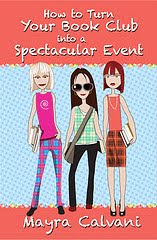
M E D I A R E L E A S E
CONTACT: Suzanne Lieurance
Email: [email protected]
Website: http://writingforchildrencenter.com
The National Writing for Children Center is Sponsoring a 6-day Virtual Book Tour for Author Mayra Calvani, Starting Wednesday, October 6, 2010
Author Mayra Calvani and her new book How to Turn Your Book Club into a Spectacular Event are being showcased the entire month of October at the National Writing for Children Center. Part of this showcase includes a 6-day virtual book tour. Join Suzanne Lieurance, founder and director of the National Writing for Children Center, and the virtual book tour hosts as they welcome Mayra Calvani for her exclusive tour that starts Wednesday, October 6.
Mayra Calvani is an award-winning multi-genre author for children and adults. Her work, The Slippery Art of Book Reviewing, was a ForeWord Best Book of the Year Award winner. She’s had over 300 reviews, interviews, articles and stories published online and in print. Her picture books include The Magic Violin, Crash, Humberto the Bookworm Hamster, and the forthcoming Frederico the Mouse Violinist.
Intrigued? Want to learn more about Mayra? Follow along on Mayra’s virtual book tour. Here's the schedule:
Wednesday, October 6
“Meet the Author”
Host: Terri Forehand – “http://terri-forehand.blogspot.com/” http://terri-forehand.blogspot.com/
Thursday, October 7
“The Writer’s Life”
Host: Kristi Bernard – “http://kristibernard.wordpress.com” http://kristibernard.wordpress.com
Friday, October 8
“Tradebook Tips for Teachers”
Host: Margot Finke – “http://margotfinke.blogspot.com/” http://margotfinke.blogspot.com/
Saturday, October 9
“Writing Tips”
Host: Donna McDine - “http://www.thegoldenpathway.blogspot.com” http://www.thegoldenpathway.blogspot.com
Sunday, October 10
“On the Go”
Host: Suzanne Lieurance – “http://suzannelieurance.com” http://suz
By:
Laura Renner,
on 3/26/2010
Blog:
bubublog
(
Login to Add to MyJacketFlap)
JacketFlap tags:
bilingual books,
The bookstore,
bububooks,
bilingual spanish english books,
bilingual children's books,
Latino Americans,
Milka Duno,
Go Milka Go!,
Indy Car,
Izod Indycar series,
children's books,
Add a tag
In November 2009, we at bububooks had the pleasure of hosting Milka Duno, Indy Car racer, to autograph her book and speak with children and fans during the Miami Book Fair International. As the Indy season gets underway, we’re excited to watch her progress through this male-dominated sport. Recently, Milka sat down with a reporter for the New Straits Times while she was in Kuala Lumpur to speak at a conference celebrating International Women’s Day. You can read that article below.
If you’d like to catch a glimpse at her bilingual children’s book, Go, Milka, Go!/¡Corre, Milka, Corre!, click here.
Scroll down to see Milka Duno’s racing schedule for this season!
New Straits Times
Thursday, March 18, 2010, 01.06 AM
WOMEN: Driving dreams
 Hispanic beauty Milka Duno shares the ups and downs of being a professional car racer in a male-dominated sport with VIMALA SENEVIRATNE
Hispanic beauty Milka Duno shares the ups and downs of being a professional car racer in a male-dominated sport with VIMALA SENEVIRATNE
VENEZUELAN beauty Milka Duno strikes a vampish pose with a mischievous look in her eyes and a white rose tucked behind her right ear.
Showing off her well-toned body to advantage, she’s sexy without being sleazy. “This reminds me of my modelling days while at university,” she says with a smile that can light up a room.
But her Latin American charm has little to do with what she does for a living. Duno is a professional race car driver who loves the challenge of burning tyres at 300kmph, a speed which would land most of us with a ticket.
“I didn’t plan on being a car racer. It was an opportunity that came my way. I tried it and haven’t looked back since,” she says. The former naval engineer and Caracas native was in Kuala Lumpur as one of the speakers at the Women of Independence — The Power of One conference held in conjunction with International Women’s Day recently. She has just finished her presentation and is taking a well-deserved break.
“I haven’t slept well in a long time,” she says while relaxing on a sofa, her right leg comfortably tucked in. “People think that I’m addicted to speed. It heightens your senses, but what I find most thrilling is the challenge. Conquering the challenge is what drives me.
“I thrive on challenges, be it on the race track, in my job or personal life. I compete to win. It’s hard work, but not impossible,” says the thirtysomething who made history last year when she became the first Hispanic woman to compete in the 93 years of the Indy 500 race.
It’s not surprising that her grit and courage have enabled her to take part in just about every major car race in the world — the 24-hour Daytona, Le Mans Series and Indy 500 — while collecting a series of titles such as “first woman to race here”, “win this” and “finish there”. She has eight wins in major sports car races and was recently inducted into the Latin American International Sports Hall of Fame. She now competes in the Indy Car Series. “There are 17 races a year, and next I will be racing in Brazil. I have to be mentally, physically and emotionally prepared.” And how does she do that? “Two hours of workout every day — a combination of weight training, swimming, running and eating healthy meals. Being single also helps as I’m able to concentrate fully on my career,” she says. Duno spends hours practising with her coach. When she gets behind the wheel, her gender takes secondary role. “I’m a driver just like the others in the race. We have only one aim — to win. This is whe
By:
Laura Renner,
on 3/6/2010
Blog:
bubublog
(
Login to Add to MyJacketFlap)
JacketFlap tags:
bilingual books,
learning to read,
bilingual children,
Trends in Education,
bilingual children's books,
bilingual homes,
english language learners,
dual language learners,
language magazine,
children's books,
reading,
literacy,
Add a tag
Language Magazine’s Editorial in the January 2010 issue focused on the importance of enjoying reading in order to develop literacy skills. I really liked the editor’s viewpoint and got permission to reprint the article here for you. If you’d like more information on or to subscribe to Language Magazine: The Journal of Communication and Education, please visit their website, www.languagemagazine.com.
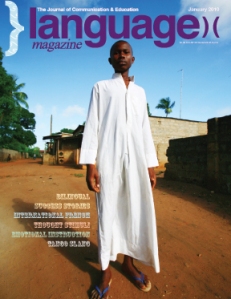 Language and literacy are the tools with which knowledge is built. Without their acquisition, no child has the chance to become an astronaut, a scientist, a doctor, a movie star, or even a musician. Without aspirations, children cannot flourish and life loses some of its magic. Yet, we continue to deny so many of our children the opportunity to develop their own language and literacy skills by refusing them access to books that are suitable for them and might even excite them.
Language and literacy are the tools with which knowledge is built. Without their acquisition, no child has the chance to become an astronaut, a scientist, a doctor, a movie star, or even a musician. Without aspirations, children cannot flourish and life loses some of its magic. Yet, we continue to deny so many of our children the opportunity to develop their own language and literacy skills by refusing them access to books that are suitable for them and might even excite them.
According to a newly released study (see News, p. 10 by the American Association of School Librarians (AASL), in more than 90 percent of school libraries, books in languages other than English account for less than five percent of the collection and, in nearly 60 percent of school libraries, they account for less than one percent. While nearly 14 percent of responding schools reported that at least 25 percent of their students were English Language Learners (ELLs) and a quarter of all respondents rated free-choice reading as the most effective ELL initiative.
Now, I can already hear the English-only brigade proclaiming that all books in school libraries in America should be in English because that’s the language spoken here, but even the most hardened English-only advocate must appreciate that children will never become literate in any language if they don’t enjoy reading. And reading in a second language is hard work at first —imagine being obliged to pick up War and Peace every night for your bedtime read.
Librarians consider “school-wide reading initiatives that encourage free choice reading” to be the most effective teaching strategy for ELLs. Many teachers and experts agree (see Opinion, p.26). Restocking our school and public libraries with books that will interest today’s kids is a relatively low cost policy with no drawbacks and an enormous upside. Not only is it a long term investment which will serve children for many years to come, but, for those who are counting, nearly all the money will end up with American publishers (yes, there are many American publishers of books in languages other than English) so the investment will satisfy stimulus package requirements.
Britain’s Cambridge University recently released the results of a three-year study (see News p.11) into elementary education, which warns “that prescribed pedagogy combined with high stakes testing and the national curriculum amounted to a ‘state theory of learning.’ Prepackaged, government approved lessons are not good for a democracy, nor for children’s education…Pupils do not learn to think for themselves if their teachers are expected to do as they are told.” This completely contradicts the blindly accepted notion that more standards and testing make better schools —the basis for the federal education funding.
Another $250 million was allocated to science, technology, engineering and math (STEM) teaching earlier this month. About the same amount of funding would buy an appropriate library book for every child in public school across the nation. Instead of pinning all its hopes of school reform success on standards, assessment, and incentive schemes, the government, like all wise investors, should spread its bets.
By:
Laura Renner,
on 3/2/2010
Blog:
bubublog
(
Login to Add to MyJacketFlap)
JacketFlap tags:
bilingual children,
cultural identity,
multiracial children,
bilingual parents,
bilingual schools,
bilingual children's books,
bilingual homes,
Raising bilingual children,
multilingual children,
Add a tag
We’ve already shared this article on Facebook and Twitter, but we love it so much we decided to post it here too! You can find the original article at: www.northjersey.com
Raising multilingual children
Monday, March 1, 2010
BY KATHRYN DAVIS
THE PARENT PAPER
We live in a multilingual world. It is not uncommon to walk down the street in any U.S. city and hear several different languages being spoken. Around the world, children are learning English as a second language at a very young age, enabling them to develop the skills necessary to interact with people all over the globe. There is no doubt about the benefits of being able to communicate in more than one language. Such ability offers the opportunity for independence, whether for business, education, leisure or travel.
According to the U.S. Census Bureau, about 10 million children between the ages of 5 and 17, or about 20 percent of children over 5, already speak a language other than English at home. Experts are citing more and more evidence of the benefits of multilingual development from an early age. While there has been some suggestion that learning a second language can delay speech acquisition and language development, research demonstrates otherwise.
More and more parents are seeking to provide their children with the advantages that bilingualism offers. That goal leads to some basic questions. When does language acquisition start? When and how should children begin learning a second language?
The basics
The young mind, particularly in infancy, is malleable. In the first few months, crying, whimpering and cooing are the primary forms of communication. Soon a baby starts to distinguish individual sounds and will begin to mimic those sounds or syllables. He will learn to distinguish between “ma” and “da” and will start to babble.
Vocalization is a baby’s way of entertaining himself, but it is also how he discovers ways to use his mouth, his tongue and vocal chords to make sounds. At one point, his speech may sound almost as though he is making sense. This is because his tones and patterns are based on the language he hears around him. Eventually, these babblings will develop into individual words that will facilitate true communication. The individual phonemes, or words sounds, that develop are primarily based on the language spoken in the home. Young children who hear more than one language develop additional sounds and, eventually, additional words that represent concepts, objects or people.
Programs that teach infants sign language have claimed to help babies as young as 10 months to communicate, before they are able to articulate with words. Experts say learning to communicate through a second language, even sign language, can be beneficial to cognitive development. However, raising a bilingual child requires a commitment of consistency in the long-term.
In her article, “Two or More Languages in Early Childhood: Some General Points and Practical Recommendations,” Annick De Houwer of the University of Antwerp and Science Foundation in Flanders, Belgium says, “A prevailing idea is that it is very easy for children to learn a new language and that hardly any effort is involved. However, learning language, even one, is a process that takes many years.”
While it is true that language acquisition is easier when it is done at a young age, it is the opportunities to hear and use a language consistently over time that brings success. De Houwer points out, “Languages are very complex. To learn all their complexities, one needs a lot of life experience…The environment plays an impo
Hi everyone,
 We at bububooks are happy to be a part of this month’s Blogging Carnival on Bilingualism again. Check out the 14 blog posts with a central theme called, We’re Not Alone, over at SpanglishBaby.
We at bububooks are happy to be a part of this month’s Blogging Carnival on Bilingualism again. Check out the 14 blog posts with a central theme called, We’re Not Alone, over at SpanglishBaby.
I’ve copied some of the themes here, but be sure to head over to SpanglishBaby to enjoy the whole carnival. Know that you’re not alone in trying to raised your children to be bilingual–meet the others at the carnival, read their stories and share your own!
–How to approach bilingualism once your children are about to become adolescents.
–An excellent topic which we don’t really cover much.
–Fun ways to introduce language into everyday activities from the mouth of an expert: a mom and an educator.
–Music is not only a fun way to teach Spanish, but real important to reinforce the minority language.
–An interesting look at a topic that has always interested me: what happens when you’re raising bilingual siblings.
–Funny, funny, funny story about the joys of bilingualism.
–Another honest look at the difficulties of raising bilingual children but from the point of view of a mom using her second language.






By:
Laura Renner,
on 12/14/2009
Blog:
bubublog
(
Login to Add to MyJacketFlap)
JacketFlap tags:
bilingual books,
learning to read,
Holidays/Celebrations,
Reading with your child,
The bookstore,
bububooks,
bilingual parents,
bilingual spanish english books,
bilingual children's books,
bilingual homes,
Latino Americans,
Francisco Alarcón,
children's books,
literacy,
Add a tag
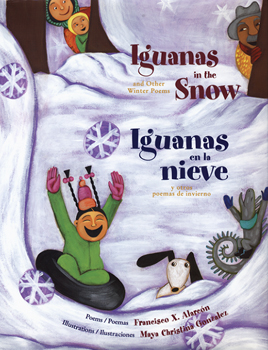 Iguanas in the Snow and Other Winter Poems/Iguanas en la nieve y otros poemas de invierno is an absolute delight. Parents, do not be intimidated by the word poem in the title! What Francisco X. Alarcón gives us with this picture book is an introduction to image. The poems, short and simple, will teach your children to grow with an acute appetite for sensory details. This collection, like the others in its series, is very visual and while it explores much associated with winter it also touches on many important themes our children face each day such as identity, community and cultural awareness.
Iguanas in the Snow and Other Winter Poems/Iguanas en la nieve y otros poemas de invierno is an absolute delight. Parents, do not be intimidated by the word poem in the title! What Francisco X. Alarcón gives us with this picture book is an introduction to image. The poems, short and simple, will teach your children to grow with an acute appetite for sensory details. This collection, like the others in its series, is very visual and while it explores much associated with winter it also touches on many important themes our children face each day such as identity, community and cultural awareness.
The illustrations, by Maya Christina Gonzalez, are vivid and play a large role in the overall joy that is found in this book. Gonzalez does an excellent job complimenting each poem and her artwork is colorful and alive.
Suited perfectly for children in grades 3-5, this book will help children begin to build their creative process using small detail. Because the poems are observations, young readers will be able to identify similar visual details during their own day-to-day experiences. While in nature, walking to school, or even while spending time with family at home, they may begin to notice detail in a new way, an important skill for all children. This book, and the others in this seasonal series provide an excellent tool for building sensory skills.
Furthermore, if your child is a young student of Spanish, this book is effective in isolating a few words at a time, so the Spanish does not become overwhelming. Because the poems are short, they can be broken up into daily lessons. It is a perfect and joyful book for any age to read.
–Jacey
For this book and the others in its series (Spring, Summer and Fall), click here. Get it in time for Christmas!
We wanted to share with you one of Jacey’s favorite poems from the book, perfect for the season! Happy Holidays!
Nochebuena Christmas Eve
me encanta I love
el sabroso the delicious
olor aroma
de tamales of tamales
cociéndose simmering
al vapor in their steam
toda mi familia my family
a mi alrededor all around me
cantando singing
las alegres the joyful
canciones de songs of
Las Posadas Las Posadas
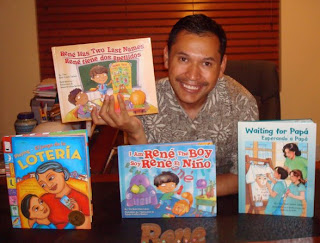
My guest today is children's author Rene Colato Lainez, who's touring the blogosphere with Latino Book Tours this week. In this interview, Colato talks about his books, his writing habits, and his road to becoming a published author. I hope you'll enjoy the interview!
About the author
René Colato Laínez is the award-winning author of I Am René, the Boy, Waiting for Papá, Playing Lotería, René Has Two Last Names and The Tooth Fairy Meets El Ratón Pérez. His picture books have been honored by the Latino Book Award, the Paterson Prize for Books for Young People, the California Collection for Elementary Readers, the Tejas Star Book Award Selection and the New Mexico Book Award. He was named “Top Ten New Latino Authors to Watch (and Read)” by latinostories.com. He is a graduate of the Vermont College MFA program in Writing for Children & Young Adults.
It's a pleasure having you here today, Rene. Why don’t you begin by telling us a little about yourself?
I am born in El Salvador. Due to the civil war, my father and I left the country in 1985 to reunite with my mother in Los Angeles, CA.
I had two dreams: to become a teacher and a writer. I did not give up my dreams. Dreams come true.
Do you have another job besides writing?
I have been a bilingual teacher for seventeen years at Fernangeles Elementary School in Sun Valley, CA. Working with students is wonderful. They are a great source of inspiration.
Tell us a bit about your latest book, and what inspired you to write such a story.
My Latest book is René Has Two Last Names. In El Salvador, like in most Latin American Countries, people use both the mother and father’s last names as a legal name. I was René Colato Laínez everywhere in El Salvador. In 1985, I received my School ID at Los Angeles High School. When I read my name, I was in shock. My mother’s last name was gone. I was only René Colato. My latest book is autobiographical just like my book I Am René, the Boy. In this new adventure, René works to keep his two last names because both last names represent his heritage.
How would you describe your creative process while writing this book? Was it stream-of-consciousness writing, or did you first write an outline?
I usually write an outline. I know that at least I need 14 scenes to write a picture book. I usually write the first and last scene and then work in the middle of the story. But also my writing is a stream of consciousness. I write about my immigrant experience and my experience about living in two cultures. I write from my heart. I will say that many times my heart whispers my stories while I type them in my computer.
What will the reader learn after reading your book?
I want the reader to feel proud of both sides of his/her families. We have received many gifts, stories and traditions from them and we are who we are thanks the love and effort of our familia,
family.
When writing, what themes do you feel passionate about?
I feel passionate about telling the stories of immigrant children and sharing the experiences of living in two cultures. Every day I speak English and español. Read the newspaper and el periódico.
Listen to music and música. Living in two cultures is fun and I want to keep sharing my stories with children and adults around the wo
By:
Laura Renner,
on 12/1/2009
Blog:
bubublog
(
Login to Add to MyJacketFlap)
JacketFlap tags:
children's books,
immigration,
NAEYC,
kindergarten,
Early Childhood Education,
bububooks,
bilingual parents,
bilingual schools,
dual language programs,
child care,
child care centers,
child care providers,
bilingual children's books,
bilingual homes,
english language learners,
Teaching dual language learners,
Uncategorized,
bilingual children,
Add a tag
I attended the annual NAEYC conference just before Thanksgiving in Washington D.C. I learned a lot more about the strategies, techniques and trends for teaching dual language learners. I also got to see some friends and make some new ones who are involved in early education. Moreover, I got to see Secretary of Education Arne Duncan speak live! Over the next few blog postings, I’ll be recapping some of the presentations I attended. For this particular posting, I’d like to discuss four overarching themes that seemed to repeat throughout the various sessions. I will expand on these themes through the specific postings that will follow.
Common Theme #1: Teachers need to build positive relationships with dual language learning children. Help them to feel safe and included. Oftentimes, every single thing is new to them since they have just moved here. Even their parents are stressed as they try to get settled in a new country. With everything so new and different (read: scary), a safe and inviting environment will help them to open up more in school.
Common Theme #2: Teachers need to develop meaningful relationships with parents and families. Parents and families from different countries display their involvement with their children’s education in various ways. Also, sometimes their current circumstances prevent them from being as involved as they’d like. This does not mean they are not interested. Furthermore, language need not be a barrier for a teacher to communicate with the families. These meaningful relationships help to eliminate misunderstandings and further create a safe environment for the child.
Common Theme #3: Be deliberate, intentional, integrative and committed with your communication strategies. I’ll offer suggestions in following postings. But certainly determine what your policy is for incorporating dual language learners and then set about creating a strategy to do so. This process will include research and can even mean hiring a consultant.
Common Theme #4: Support the home language and culture. Dual language learning children do not come to your school as a blank slate. By supporting their home language and culture, you maximize their potential to learn, send them a message that they are not different, help create that safe and inclusive environment, and lay the foundation for a strong relationship between them and their parents.
I look forward to sharing with you specific details from the sessions as well as expanding upon these four themes. In the meantime, Happy Holidays and don’t forget to check out our bookstore, where all the books are bilingual: www.bububooks.com.
–Laura






By:
Laura Renner,
on 11/23/2009
Blog:
bubublog
(
Login to Add to MyJacketFlap)
JacketFlap tags:
children's books,
bilingual books,
Miami Book Fair International,
The bookstore,
bububooks,
bilingual spanish english books,
bilingual children's books,
getting your child ready to read,
Latino Americans,
Milka Duno,
Add a tag
 For the weekend of November 13-15, Jacey and I headed down to Miami for the annual Miami Book Fair International. We were excited to participate in such a popular annual event and to spread our mission of bilingualism to the wonderful South Floridians!
For the weekend of November 13-15, Jacey and I headed down to Miami for the annual Miami Book Fair International. We were excited to participate in such a popular annual event and to spread our mission of bilingualism to the wonderful South Floridians!
On Saturday and Sunday of that weekend, Milka Duno joined us to sign her book and take photos with fans. We truly enjoyed spending those two days with her (an awesome and dedicated woman!)
Milka’s book, Go, Milka, Go!/¡Corre, Milka, Corre!, highlights her life and the importance of studying hard to succeed. She spoke with children about the importance of education and her foundation, Milka Way. The program’s mission is to inspire children and young adults to “Aim for the Stars” and achieve academic excellence.
I personally felt inspired by how she brightened up the day and spoke words of encouragement for so many children, families and fans who got to meet and speak with her. Indeed, one fan even drove two hours just to meet her and get his copy of her book autographed!
We were honored to have Milka join us because her passions are so closely aligned with ours and because she is such a great person. We share our focus on education and literacy not bound by language. We’ll be sure to let you know the next time Milka will visit our booth!
Milka’s first book is bilingual in Spanish and English and at the reading level for ages 8-12. We brought back a limited number of autographed copies. Buy yours now before they’re gone!
Check out some of the photos below. Thank you Milka!
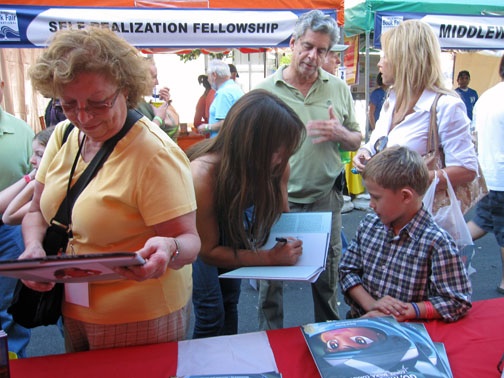

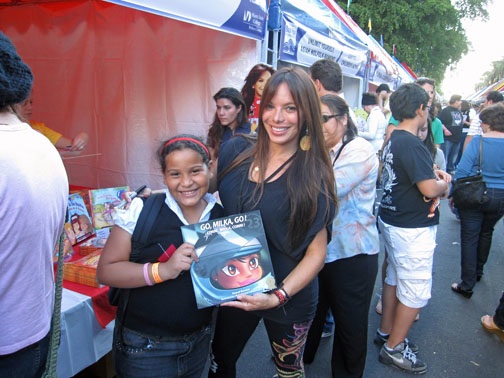
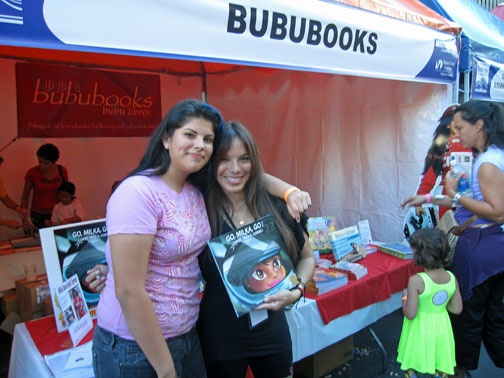


![milka phot
</p>
<div class=]() 1 Comments on Spending the Day with Milka Duno, Indy Racecar Driver, last added: 12/22/2009
1 Comments on Spending the Day with Milka Duno, Indy Racecar Driver, last added: 12/22/2009
By:
Laura Renner,
on 11/2/2009
Blog:
bubublog
(
Login to Add to MyJacketFlap)
JacketFlap tags:
children's books,
bilingual books,
Holidays/Celebrations,
Dia de los Muertos,
bilingual children,
bububooks,
cultural identity,
bilingual spanish english books,
bilingual children's books,
bilingual authors,
Nancy Tabor,
Latino Americans,
Mexican holidays,
Add a tag
Many of you have probably heard of the Day of the Dead, celebrated in Mexico, and more and more in the United States, this time of year. It is a holiday for family and friends to gather and remember friends and family who have passed away. Not a somber event, the celebration includes cleaning the house, building an offering, or ofrenda, that includes candles, flowers, their favorite items while alive and other items to help them on their journey and visiting their graves. This holiday also coincides with the Catholic holidays of All Saints’ Day and All Souls’ Day.
Holidays like the Day of the Dead are celebrated throughout the world and in various cultures, where families come together to honor the dead. In Korea, for
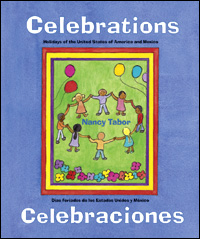
example, a large feast is cooked. Fruit is placed on the table in odd numbers with the top of one cut off. Chopsticks are placed upright in a bowl of rice. The front door is left opened during the ceremony. These actions allow for the dead to enter and enjoy the food!
Many in the United States have embraced the Day of the Dead holiday. One town in Texas, for instance, held a shoebox ofrenda competition. There are free processions tonight in San Francisco and Oakland, etc. Check your local area for events!
For more information on ofrenda, check out: http://www.inside-mexico.com/ofrenda.htm and for information on the Day of the Dead holiday, visit http://www.dayofthedead.com/
In the meantime, enjoy the fall and upcoming holidays!
I also would like to use this holiday to highlight a bilingual book we carry at bububooks called: Celebrations / Celebraciones: Holidays of the United States of America and Mexico / Dias feriados de los Estados Unidos y Mexico. In it, author Nancy Tabor explains major holidays in the US and Mexico and how they are celebrated. Be sure to check it out!
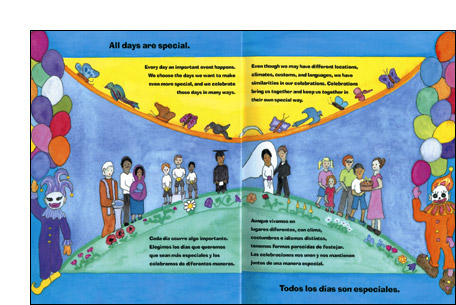






By:
Laura Renner,
on 10/19/2009
Blog:
bubublog
(
Login to Add to MyJacketFlap)
JacketFlap tags:
children's books,
literacy,
bilingual books,
learning to read,
South Carolina,
bilingual children,
The bookstore,
bububooks,
bilingual parents,
bilingual schools,
child care,
child care centers,
child care providers,
bilingual children's books,
getting ready to read,
getting your child ready to read,
english language learners,
bilingual child care,
Georgia Literary Festival,
SCAEYC,
Add a tag
Eighteen months ago, I took up karate. It's a great workout, but the biggest reason I train is I want to be a formidable senior citizen. If someone tries to nab my purse or deny my senior discount at Denny's, I'll be able to answer with a quick roundhouse kick to the solar plexus. By laying the foundation now, I'll be a badass when I'm 65.
But the coolest thing about taking up karate when you're a woman in her mid-40's is that people don't automatically expect it. If you're just a casual acquaintance, you won't know I'm working toward my black belt. And by the time I'm collecting Social Security, the possibility won't even cross your mind. Unless you try to steal my purse.
In life most people become more complex as we get to know them. This should also be true for characters in children's books. At a conference recently, Lyron Bennett, editor for Sourcebooks Jabberwocky, called it "the slow reveal". It means giving your characters enough varied qualities that some can be withheld until called for in the plot.
The slow reveal is especially important when writing a series. If J.K. Rowling had allowed Harry Potter to reach his full power as a wizard in Book 1, would fans have waited nine years and six more books to learn if he finally defeated you-know-who? But equally important is planting the seeds early on for who you want your character to become. From the start, readers saw Harry's potential, and Rowling allowed greatness to surface in Harry when it was least expected. Those qualities grew along with Harry as the series unfolded.
You don't want to give away everything at once in stand-alone books either. Picture books and easy readers, with their lower word counts and straightforward plots, do best with characters who have one or two surprises up their sleeve. In Peggy Parish's classic easy reader Amelia Bedelia, the child sees that Amelia is doing a bad job on her first day as a housekeeper because she doesn't understand the list her employer left her. But even before Amelia starts on the list, she whips up a lemon merengue pie. What the reader doesn't know is that Amelia makes the best pies anywhere, which eventually saves her job at the end of the book.
Parceling out your protagonist's strengths and weaknesses keeps the tension taut in a novel. In Gary Paulsen's beloved Hatchet (ages 11-14), Brian, a city kid, is stranded in the Canadian wilderness after the his bush plane crashes, killing the pilot. Neither Brian nor the reader know if he's got what it takes to survive on his own. Can he figure out how to start a fire? Yes, quite by accident. Can he fish? Eventually. Kill and cook a bird? How about survive a moose attack or weather a tornado? Brian evolves from reacting to his predicament and stumbling upon solutions to carefully taking control of his situation. But nothing Brian does is out of character. Though he must teach himself to live in the wild, he draws upon bits of information he learned from watching television or at school, and reserves of strength that were in him all along.
Even if you're writing a single title, make your children's book characters complex enough to live for several books, just in case. Fans loved Brian so much that Paulsen was persuaded to use the character in several other wilderness adventures. Picture book series (such as Mo Willem's Pigeon books) or easy reader series like Amelia Bedelia generally grow because the protagonist's quirks are open-ended and funny enough that readers don't mind exploring them over and over in different circumstances.
The slow reveal works particularly well in mysteries. In this genre, the readers gradually get to know the victim (perhaps an honor student who is discovered to be running an Internet business selling test answers), and the villain (who may seem like a good guy at the beginning of the book). Or, how about a first person narrator in any genre who appears normal and likable early on, but becomes more unreliable as the story unfolds? Read Robert Cormier's timeless young adult I Am the Cheese for a masterful example of a shifting first person reality. If you prefer a broader perspective, try Avi's Nothing But the Truth: A Documentary Novel for ages 11-14, which looks at one incident from several viewpoints, gradually separating fact from fiction. So when you first breath life into your characters, don't stop too soon. Add layers that can be exposed later on. These surprises will keep readers enthralled, whether you're writing about a boy wizard, a demanding pigeon, or a ninja grandma.
Laura Backes is the publisher of Children's Book Insider, the Newsletter for Children's Writers. For more information about how to write children's books, including free articles, market tips, insider secrets and much more, visit Children's Book Insider's home on the web at http://write4kids.com and the CBI Clubhouse at http://cbiclubhouse.com | |
View Next 12 Posts
 Felicia Hoshino, Japanese translation by Akiko Hisa,
Felicia Hoshino, Japanese translation by Akiko Hisa,



 the United States my beautiful name was a girl’s name, Renee. Children not only laughed because I had a girl’s name but also because I had two last names, “Your name is longer than an anaconda” “You have a long dinosaur’s name.”
the United States my beautiful name was a girl’s name, Renee. Children not only laughed because I had a girl’s name but also because I had two last names, “Your name is longer than an anaconda” “You have a long dinosaur’s name.” The ideas to write many of my books are born in the classroom. One day, a first grader told me, “I want to write a letter to my mamá. She is in Guatemala and I miss her so much.” That night I wrote a story named
The ideas to write many of my books are born in the classroom. One day, a first grader told me, “I want to write a letter to my mamá. She is in Guatemala and I miss her so much.” That night I wrote a story named  Mother Earth is not only a source of life in Talking with Mother Earth/Hablando con Madre Tierra, a profound collection of poems by renowned Salvadoran poet
Mother Earth is not only a source of life in Talking with Mother Earth/Hablando con Madre Tierra, a profound collection of poems by renowned Salvadoran poet  Gladys Elizabeth Barbieri, illustrated by
Gladys Elizabeth Barbieri, illustrated by 
 Sunny Seki, author-illustrator,
Sunny Seki, author-illustrator,



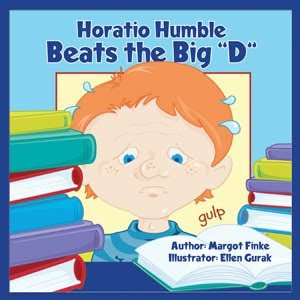
 log
log 


















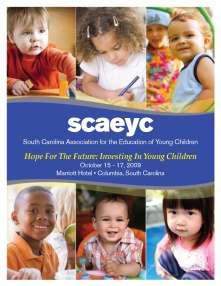
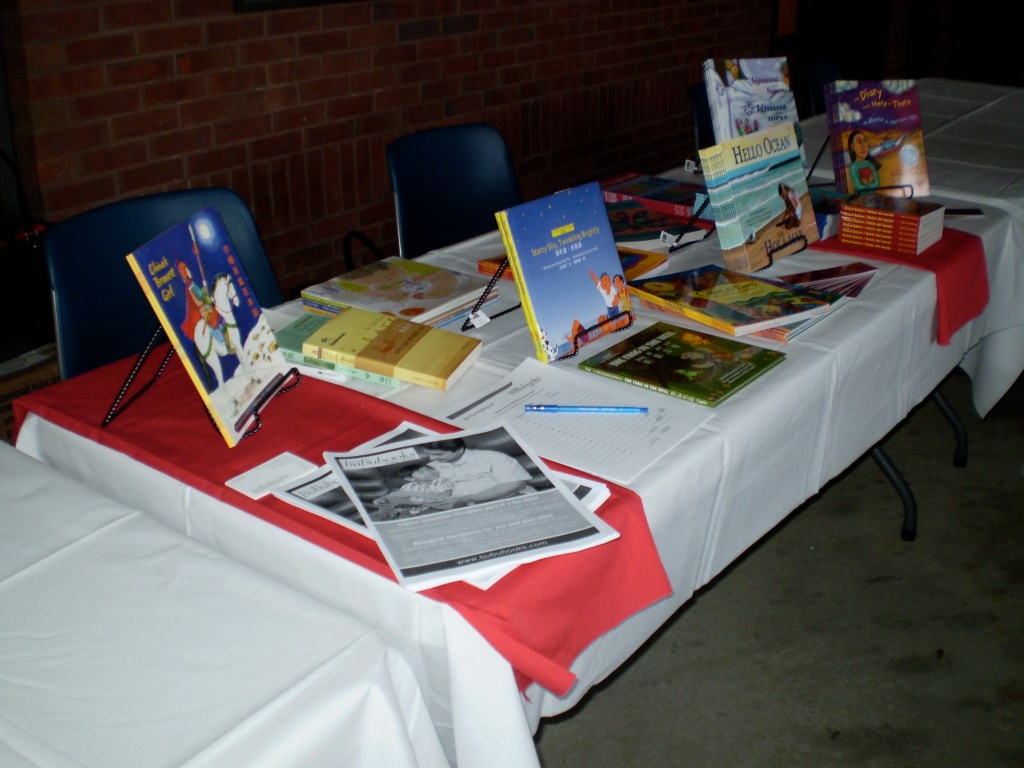


It sounds absolutely adorable. What a precious dog. Thanks for sharing!
How cute!
If the inside looks as good as the cover, children will love it!
And the real Harvey is just as cute!
Morgan Mandel
http://morganmandel.blogspot.com
Awww. It looks wonderful! I love it!
iPad, huh? I am officially jealous. That's my next big purchase.
This sound like a fun book. The cover art is wonderful.
Cheryl
Hi Mayra,
I too, adore dogs and love reading books about dogs. Thanks for sharing the review.
Nicole Weaver
http://marieandherfriendthe seaturtle.blogspot.com
Love labs, and the story sounds so cute. Thanks for sharing, I will have to grab a copy.
Terri
I am a big fan of dog books myself! Thanks for reviewing this. I wish I had an ipad!
Sounds like it will be a fun book to read. I like the cover. Enjoyed your review!
This looks so adorable and fun! My kids would love it!